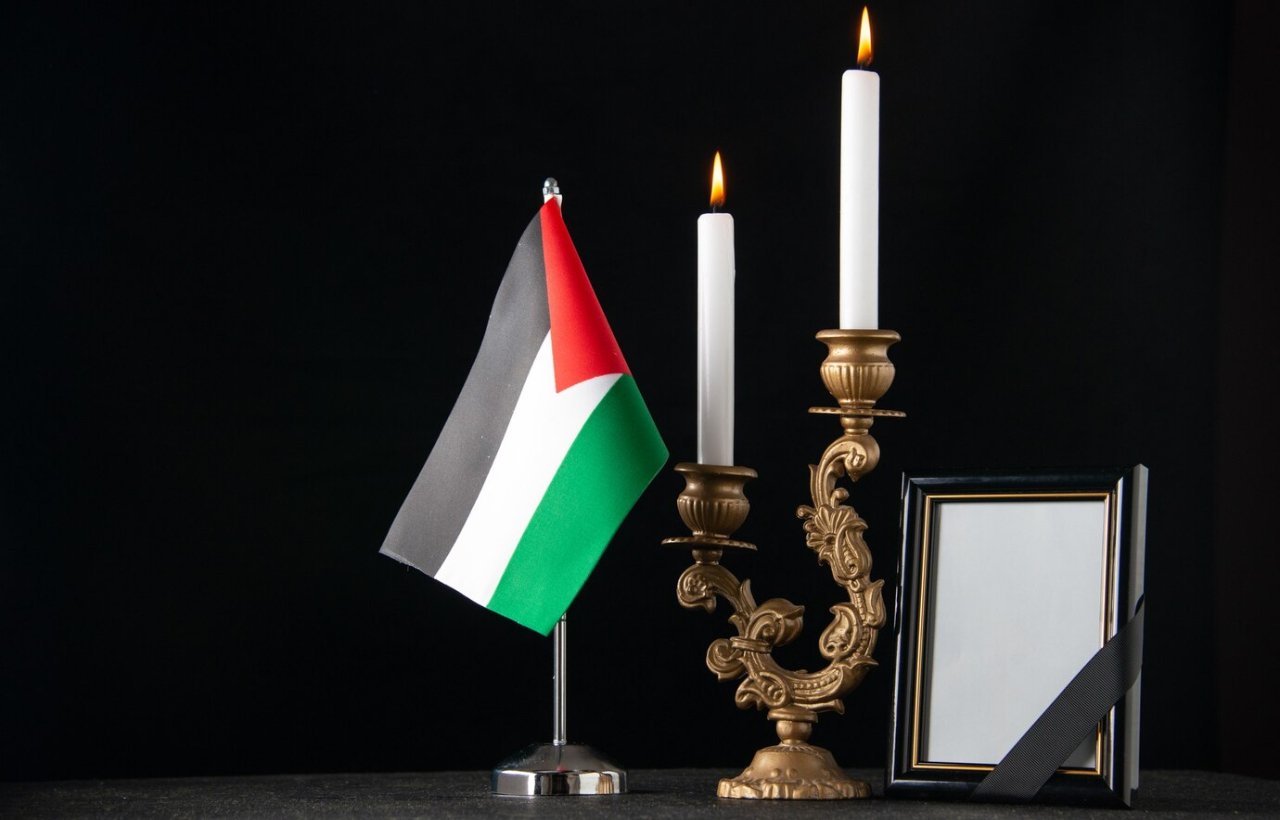The Palestine flag stands as a symbol of identity, resilience, and pride for Palestinians worldwide. As a banner of resistance and solidarity, it has become an emblem for the Palestinian cause and a mark of their cultural heritage. The flag’s design is straightforward yet deeply meaningful, with each color and shape holding profound symbolism. In this article, we explore the history, elements, meaning, and modern significance of the Palestine flag, diving into the reasons it resonates so deeply with those it represents.
History of the Palestine Flag
The Palestine flag originated in the early 20th century, rooted in the Arab Revolt of 1916 against the Ottoman Empire. The design was inspired by the Pan-Arab colors—black, white, green, and red—each hue reflecting a part of the region’s rich history. These colors represented various Arab dynasties and their storied contributions, with roots reaching back to the Prophet Muhammad’s time.
The flag was initially introduced by Sharif Hussein, the Emir of Mecca, and the leader of the Arab Revolt. This revolt aimed at securing independence from Ottoman rule, bringing the flag its first taste of symbolic freedom. As the years passed, the flag evolved and eventually was adopted in 1964 by the Palestine Liberation Organization (PLO), signaling a commitment to Palestinian identity and statehood.
You May Also Like: Daffodil Tattoo: Vibrant Meanings and Stunning Designs
In 1988, when the Palestinian Declaration of Independence was issued, the flag became officially recognized as the national flag of Palestine. Despite the ongoing political complexities in the region, the flag has remained a powerful visual of Palestinian solidarity and resilience.
Design and Colors of the Palestine Flag
The Structure and Layout
The Palestine flag is designed in a horizontal tricolor layout with three equal-sized stripes. The top stripe is black, the middle stripe is white, and the bottom stripe is green. To the left, a red triangle extends from the flag’s hoist side, pointing inward toward the center.
Meaning of the Colors in the Palestine Flag
Each color of the Palestine flag holds historical significance and meaning that resonates across the Arab world:
- Black: Represents the Abbasid Caliphate, a historic Muslim empire that played a crucial role in the Arab world’s cultural and intellectual development.
- White: Symbolizes the Umayyad Caliphate, known for its advancements in the arts and sciences during the early years of Islamic history.
- Green: Reflects the Fatimid Caliphate, another significant Islamic dynasty known for its achievements and influence in the region.
- Red Triangle: Embodies the Hashemite dynasty and the Arab Revolt of 1916, an era associated with the rise of Arab nationalism and unity.
Together, these colors stand for the unity of the Arab world, encompassing a shared heritage, collective struggles, and aspirations for independence and autonomy.
The Palestine Flag as a Symbol of Identity
The Palestine flag is more than just a national banner; it is a statement of Palestinian identity, pride, and resilience. For Palestinians and supporters around the globe, the flag represents a sense of belonging and a reminder of their heritage. In a region marked by conflict and occupation, the flag serves as a unifying symbol for Palestinians, regardless of their location or political stance.
The flag’s colors and patterns carry with them generations of Palestinian history, reflecting struggles, triumphs, and a continuous yearning for self-determination. Displaying the Palestine flag is an act of pride and solidarity, often displayed at rallies, in homes, on social media, and during cultural celebrations.
The Palestine Flag in Global Movements
Across the globe, the Palestine flag is widely recognized in protests and social movements advocating for Palestinian rights. In recent years, solidarity with Palestine has grown, with people and organizations from diverse backgrounds rallying under the flag. In many cases, it has become synonymous with movements against oppression, symbolizing broader calls for justice and human rights.
The flag is flown at international protests, especially in European and North American cities, where Palestinian and pro-Palestinian groups gather to raise awareness about issues facing the region. Through its visual presence in these protests, the flag has taken on a global resonance, speaking to broader issues of freedom, justice, and equality.
Legal Status and Recognition of the Palestine Flag
The Palestine flag received official recognition when the State of Palestine declared its independence in 1988. However, due to the complex political status of Palestine on the world stage, the flag’s recognition varies by country. In 2015, the United Nations General Assembly adopted a resolution permitting the flag to be flown at its headquarters alongside other member states’ flags, a landmark move symbolizing Palestine’s aspirations for sovereignty.
In countries that recognize Palestine as a state, the flag is given equal respect to other national flags. However, in other places, its display remains a contentious issue due to political sensitivities. Despite these challenges, the flag’s global presence has grown, and its recognition at the UN stands as a testament to Palestine’s enduring quest for international legitimacy.
Cultural Significance of the Palestine Flag
The Role of the Flag in Palestinian Art and Culture
The Palestine flag has inspired countless pieces of art, literature, and media. Its colors and design are frequently used in paintings, music videos, poetry, and fashion, often symbolizing the resilience and creativity of the Palestinian people. For many artists, the flag serves as a canvas to communicate messages of hope, remembrance, and pride.
In traditional Palestinian embroidery, also known as tatreez. The colors of the flag are often incorporated into designs that depict Palestinian heritage. Such uses of the flag reinforce its cultural significance and demonstrate the pride Palestinians have in their shared history.
Celebrations and Commemorations with the Palestine Flag
The flag is often seen at celebrations, both locally and abroad. Particularly during Palestinian commemorations such as Land Day and Nakba Day. During these events, the flag serves as a collective symbol of remembrance and resistance, helping Palestinians remember their roots while expressing hope for the future.
At weddings, cultural festivals, and other social events, the flag is displayed to honor Palestinian identity and traditions. Through these expressions, the flag becomes a powerful element of social cohesion, linking generations together under a shared symbol.
Why the Palestine Flag Matters in Today’s World
The Flag as a Tool for Advocacy and Awareness
In today’s interconnected world, the Palestine flag has gained significance far beyond Palestine’s borders. Through digital platforms and global campaigns, the flag has reached new audiences. Its becoming a symbol of advocacy for human rights and social justice. In an age where information travels instantly, the flag is easily shared on social media. Its spreading awareness about the Palestinian cause and its core issues to millions worldwide.
The Flag in a Global Context of Symbols
The Palestine flag resonates strongly in the global context, where national symbols carry weight and meaning beyond borders. Like many flags tied to historical struggles, the Palestine flag has taken on a transcendent identity, echoing themes of resilience, pride, and a longing for justice. This shared symbolism has helped the flag connect with people globally, encouraging solidarity and empathy for the Palestinian cause.
FAQs
What do the colors of the Palestine flag represent?
Each color in the Palestine flag represents historic Arab dynasties and revolts. Black is for the Abbasids, white for the Umayyads, green for the Fatimids, and red for the Hashemite dynasty and the Arab Revolt.
When was the Palestine flag first used?
The flag’s origins trace back to the Arab Revolt of 1916. It was later officially adopted by the PLO in 1964 and recognized as Palestine’s national flag in 1988.
Where is the Palestine flag displayed?
The flag is displayed globally, especially in Palestinian territories, diaspora communities, and international demonstrations supporting Palestinian rights.
What is the significance of the red triangle in the Palestine flag?
The red triangle symbolizes the Hashemite dynasty and the Arab Revolt. Its embodying themes of resistance and unity in the Arab world.
Why is the Palestine flag seen at protests?
The flag represents solidarity with Palestine and is often used in global protests to raise awareness about Palestinian struggles, calling for justice and human rights.
How does the Palestine flag relate to the UN?
In 2015, the United Nations passed a resolution allowing the Palestine flag to be flown at its headquarters, symbolizing support for Palestinian statehood.
Is the Palestine flag similar to any other flags?
Yes, the Palestine flag shares similar colors and layouts with other Pan-Arab flags. Such as those of Jordan and the United Arab Emirates, due to their shared heritage.
Conclusion
The Palestine flag serves as a powerful symbol of heritage, resistance, and hope. Through its design and the stories behind its colors, it reflects centuries of history and resilience. It stands as a reminder of the Palestinian people’s identity, aspirations, and their global support for justice and dignity. As the flag waves, it continues to inspire those who identify with it, standing tall as a sign of unity and determination.







